Soccer
The Clash of Titans: Why Spain vs. France is a Battle for Soccer’s Soul
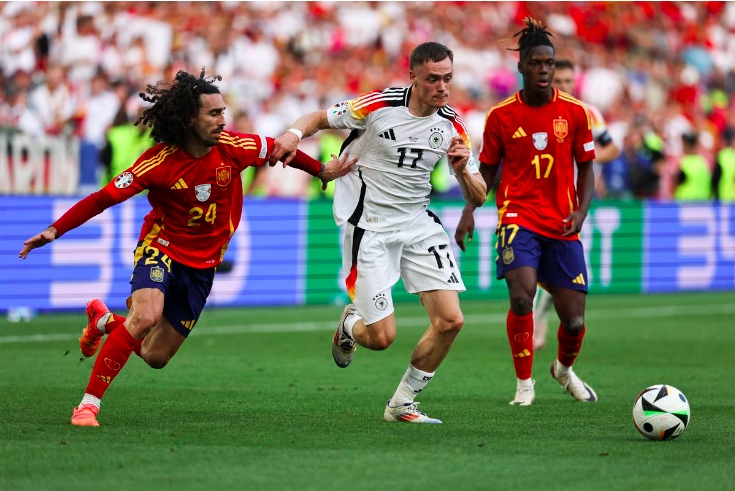
The Clash of Titans: Why Spain vs. France is a Battle for Soccer’s Soul
In the world of soccer, few matches command as much attention and excitement as a clash between Spain and France. These two football powerhouses have a storied history, rich traditions, and a profound impact on the game. As they prepare to face each other in Euro 2024, the match is more than just a game—it’s a battle for the soul of soccer. This article delves into the historical significance, tactical philosophies, and cultural impact of this epic rivalry, exploring why Spain vs. France is more than just a contest on the field.
Historical Rivalry and Significance
The Early Encounters
The rivalry between Spain and France dates back to the early 20th century. Their first official encounter was in 1922, and since then, both teams have clashed numerous times in competitive and friendly matches. Each match adds a new chapter to their rich history, filled with memorable moments, iconic goals, and dramatic finishes.
Major Tournaments
Spain and France have faced each other in several major tournaments, including the FIFA World Cup and the UEFA European Championship. These high-stakes matches have often been decisive, with each team striving to outdo the other on the grandest stages of football. Notably, France’s victory over Spain in the 1984 European Championship semi-final and Spain’s triumph in the 2012 Euro quarter-final are etched in the annals of football history.
Tactical Philosophies
Spain’s Tiki-Taka
Spain’s football philosophy, known as “Tiki-Taka,” revolutionized the game in the late 2000s. Characterized by short, precise passing and maintaining possession, Tiki-Taka led Spain to unprecedented success, including winning the 2010 World Cup and consecutive European Championships in 2008 and 2012. The emphasis on ball control and fluid movement has become synonymous with Spanish football.
France’s Versatile Approach
France, on the other hand, has showcased a more versatile and pragmatic approach. Known for their physicality, tactical flexibility, and clinical finishing, the French national team has adapted its style to suit different opponents. This adaptability has brought them significant success, including World Cup victories in 1998 and 2018 and a European Championship in 2000.
Cultural Impact
Football as a Cultural Phenomenon
In both Spain and France, football is more than just a sport—it’s a cultural phenomenon. In Spain, football represents regional pride and identity, with clubs like Barcelona and Real Madrid symbolizing more than just teams but cultural icons. In France, football reflects the nation’s diversity, unity, and spirit, with the national team’s success seen as a source of national pride.
Influence on Youth and Grassroots
The influence of these two footballing giants extends to youth and grassroots levels. Spain’s emphasis on technical skills and tactical awareness has shaped their youth academies, producing world-class talents. France’s focus on athleticism and tactical intelligence has similarly influenced their youth development programs, leading to a steady stream of talented players emerging on the international stage.
Key Players to Watch
Spain’s Rising Stars
As Spain and France prepare for their Euro 2024 showdown, several key players are expected to shine. For Spain, players like Pedri, Gavi, and Ansu Fati represent the next generation of talent. Their technical skills, creativity, and vision make them crucial to Spain’s success and the continuation of their footballing philosophy.
France’s Powerhouses
France boasts a wealth of talent, with players like Kylian Mbappe, Antoine Griezmann, and N’Golo Kante leading the charge. Mbappe’s speed and goal-scoring prowess, Griezmann’s creativity, and Kante’s tireless work ethic make them indispensable to France’s tactical setup. These players embody the versatility and strength that define French football.
The Managers’ Influence
Luis Enrique’s Vision
Spain’s manager, Luis Enrique, brings a wealth of experience and a clear vision to the team. Known for his emphasis on possession and attacking football, Enrique aims to blend Spain’s traditional Tiki-Taka with a more direct approach. His ability to adapt tactics and nurture young talents will be crucial in Spain’s quest for Euro 2024 glory.
Didier Deschamps’ Pragmatism
France’s manager, Didier Deschamps, is a master tactician known for his pragmatic approach. Under his guidance, France has become a well-oiled machine, capable of dominating possession and launching rapid counter-attacks. Deschamps’ emphasis on team cohesion and tactical discipline has been key to France’s recent successes.
The Fans’ Perspective
Spanish Passion
Spanish fans are renowned for their passion and unwavering support. Whether at home or abroad, they create an electrifying atmosphere, turning every match into a spectacle. The sea of red and yellow in the stands, accompanied by chants and songs, embodies the spirit of Spanish football.
French Fervor
French fans, known for their fervor and enthusiasm, also play a crucial role in supporting their team. The iconic “Allez Les Bleus” chant and the vibrant displays of blue, white, and red in the stands reflect the pride and unity of the French supporters. Their energy and passion drive the team forward, creating an intimidating environment for opponents.
Media Coverage and Hype
Spanish Media Frenzy
In Spain, media coverage of football is intense and comprehensive. Newspapers, TV channels, and online platforms dedicate extensive resources to analyzing, debating, and celebrating every aspect of the game. The build-up to a Spain vs. France match is marked by in-depth previews, expert opinions, and fan interactions, heightening the anticipation and excitement.
French Media Spotlight
Similarly, in France, the media plays a significant role in generating hype and anticipation. From detailed tactical breakdowns to exclusive interviews with players and coaches, the French media leaves no stone unturned in covering the big match. The narratives and storylines crafted by the media add to the drama and spectacle of the encounter.
Historical Matches Revisited
Spain’s Dominance in 2012
One of the most memorable encounters between Spain and France was the 2012 Euro quarter-final. Spain’s 2-0 victory, marked by Xabi Alonso’s brace, showcased their dominance and tactical superiority. This match epitomized Spain’s golden era and their mastery of Tiki-Taka football.
France’s Redemption in 1984
In contrast, France’s 2-0 victory over Spain in the 1984 European Championship semi-final marked a significant moment in their footballing history. Michel Platini’s brilliance led France to their first major international title, signaling the emergence of a new footballing powerhouse.
The Road to Euro 2024
Spain’s Preparation and Challenges
As Spain prepares for Euro 2024, they face several challenges and opportunities. The integration of young talents, the balance between possession and direct play, and the ability to adapt to different opponents will be crucial. Spain’s preparation involves a mix of friendly matches, tactical drills, and mental conditioning to ensure they are ready for the competition.
France’s Quest for Glory
France enters Euro 2024 with high expectations and a clear objective—to win the tournament. Their preparation includes rigorous training camps, strategic friendlies, and a focus on building team chemistry. The challenge for France will be to maintain consistency, manage injuries, and execute their game plan effectively in high-pressure situations.
The Tactical Battle
Midfield Dominance
The midfield battle between Spain and France will be a key factor in determining the outcome of their encounter. Spain’s emphasis on possession and intricate passing contrasts with France’s physicality and quick transitions. The ability to control the midfield and dictate the tempo of the game will be crucial for both teams.
Defensive Solidity
Defensive solidity will also play a pivotal role. Spain’s high pressing and compact defensive structure aim to win the ball back quickly, while France’s organized and disciplined defense seeks to absorb pressure and launch counter-attacks. The effectiveness of each team’s defensive strategies will be tested in this high-stakes match.
Key Match-Ups
Pedri vs. Kante
One of the most intriguing match-ups will be between Spain’s Pedri and France’s N’Golo Kante. Pedri’s creativity, vision, and technical skills will be pitted against Kante’s relentless energy, ball-winning ability, and tactical intelligence. This duel in the midfield will be a microcosm of the larger tactical battle.
Mbappe vs. Laporte
Another key match-up will be between France’s Kylian Mbappe and Spain’s Aymeric Laporte. Mbappe’s blistering pace, dribbling skills, and goal-scoring threat will challenge Laporte’s defensive acumen, positioning, and aerial ability. The outcome of this battle could significantly influence the result of the match.
Predictions and Expectations
Expert Opinions
Football pundits and experts have weighed in on the Spain vs. France encounter, offering varied predictions and insights. Some believe Spain’s possession-based approach will prevail, while others argue that France’s versatility and star power will give them the edge. The general consensus is that the match will be closely contested, with both teams having the potential to emerge victorious.
Fan Expectations
Fans from both nations have high expectations for their teams. Spanish fans hope to see a resurgence of their golden era, characterized by beautiful football and clinical finishing. French fans, on the other hand, anticipate a continuation of their recent success, with their team showcasing skill, strength, and tactical brilliance. The excitement and anticipation among fans add to the spectacle of the match.
The Future of the Rivalry
Legacy and Impact
The Spain vs. France rivalry is more than just a series of matches—it’s a legacy that has shaped European football. The encounters between these two giants have produced iconic moments, legendary players, and tactical innovations that continue to influence the sport. The legacy of this rivalry is a testament to the beauty and passion of football.
Evolving Dynamics
As football evolves, so does the dynamic of the Spain vs. France rivalry. The emergence of new talents, changes in tactical approaches, and shifting power dynamics ensure that this rivalry remains fresh and exciting. Future encounters will continue to captivate fans and contribute to the rich tapestry of European football.
Conclusion
The clash between Spain and France in Euro 2024 is not just a match—it’s a battle for the soul of soccer. With their rich histories, distinct tactical philosophies, and passionate fan bases, Spain and France represent the essence of football. As they prepare to face off, the world will witness a spectacle that embodies the beauty, drama, and excitement of the beautiful game. Whether it’s the possession-based artistry of Spain or the versatile brilliance of France, this encounter promises to be a defining moment in the history of soccer.
Frequently Asked Questions (FAQs)
How many times have Spain and France faced each other in major tournaments?
Spain and France have faced each other several times in major tournaments, including the FIFA World Cup and the UEFA European Championship. Notable encounters include the 1984 European Championship semi-final and the 2012 Euro quarter-final.
Which team has a better head-to-head record in competitive matches?
Historically, France has had a slight edge over Spain in head-to-head competitive matches. However, the outcomes have often been closely contested, reflecting the high level of competition between the two teams.
What are the key tactical differences between Spain and France?
Spain’s tactics are characterized by their Tiki-Taka style, focusing on possession and short, precise passes. France, on the other hand, employs a more versatile approach, combining physicality, quick transitions, and tactical flexibility to adapt to different opponents.
How do the youth academies of Spain and France contribute to their national teams?
Spain’s La Masia and France’s Clairefontaine academies are renowned for producing world-class talents. La Masia focuses on technical skills and tactical awareness, while Clairefontaine emphasizes athleticism and intelligence, providing a steady stream of talented players for their national teams.
What impact do Spain and France’s football philosophies have on the global game?
Spain’s emphasis on possession and technical prowess has influenced teams worldwide, promoting a style of play that values control and creativity. France’s versatile and physical approach has also left its mark, encouraging teams to combine skill with strength and adaptability.
For further details and insights, refer to the original article on ESPN: Spain vs. France: Euro 2024 battle for the soul of soccer.
Soccer
Brazil Coach Dorival Junior Takes Full Responsibility for Copa América Exit Against Uruguay

Brazil Coach Dorival Junior Takes Full Responsibility for Copa América Exit Against Uruguay
Brazil’s journey in the Copa América 2024 ended in disappointment as they were knocked out by Uruguay in the quarter-finals. The Brazilian national team’s head coach, Dorival Junior, has taken full responsibility for the team’s early exit. In this article, we delve into the details of the match, the reactions from both teams, and the implications for Brazil’s football future.
Match Overview
The match between Brazil and Uruguay was highly anticipated, with both teams having a storied history in South American football. The game took place at the iconic Maracanã Stadium, adding to the intensity of the encounter. Uruguay managed to secure a 2-1 victory, thanks to goals from Edinson Cavani and Federico Valverde. Brazil’s lone goal came from Neymar Jr., who showed moments of brilliance but could not carry his team to victory.
Dorival Junior’s Reaction
Taking Full Responsibility
In the post-match press conference, Dorival Junior was candid about Brazil’s performance. “I take full responsibility for our exit,” he stated. “We had a game plan, but unfortunately, we couldn’t execute it as intended. Uruguay played a great game, and we have to acknowledge their strength and strategy.”
Tactical Decisions
Critics and fans alike have questioned some of the tactical decisions made by Dorival Junior during the match. The decision to start with a more defensive lineup raised eyebrows, especially considering Brazil’s attacking prowess. “In hindsight, we could have been more aggressive from the start,” Dorival admitted. “However, we believed that a solid defense would give us the best chance against a strong Uruguayan side.”
Uruguay’s Performance
Uruguay’s victory was a testament to their resilience and tactical acumen. Under the guidance of coach Diego Alonso, Uruguay executed their game plan to perfection. Edinson Cavani, with his wealth of experience, opened the scoring with a clinical finish, while Federico Valverde’s goal showcased the team’s ability to capitalize on Brazil’s defensive lapses.
Key Players
- Edinson Cavani: The veteran striker’s goal was crucial in setting the tone for Uruguay. His leadership on the field was evident as he constantly motivated his teammates.
- Federico Valverde: The young midfielder’s goal was a highlight of the match. His ability to control the midfield and transition from defense to attack was pivotal in Uruguay’s success.
- Fernando Muslera: The Uruguayan goalkeeper made several key saves, denying Brazil’s forwards and maintaining Uruguay’s lead.
Brazil’s Performance
Despite the loss, there were some positive takeaways for Brazil. Neymar Jr.’s performance was a bright spot, as he constantly threatened Uruguay’s defense. However, the team as a whole struggled to find cohesion and break down Uruguay’s organized defense.
Areas for Improvement
- Defensive Organization: Brazil’s defense looked vulnerable at times, particularly on counter-attacks. Improving defensive coordination will be crucial for future tournaments.
- Midfield Creativity: The midfield lacked creativity and struggled to provide the forwards with quality opportunities. Finding a balance between defense and attack in the midfield will be essential.
- Finishing: Despite creating several chances, Brazil’s forwards were unable to convert them into goals. Clinical finishing will be a focus in upcoming training sessions.
Reactions from Players
Neymar Jr.
Neymar, Brazil’s star player, expressed his disappointment after the match. “We gave it our all, but it wasn’t enough,” he said. “We need to learn from this and come back stronger. Our focus now shifts to preparing for the next challenges.”
Casemiro
Casemiro, the experienced midfielder, echoed Neymar’s sentiments. “This loss hurts, but we must stay united and work harder,” he stated. “We have a talented squad, and I believe we will bounce back.”
Future Implications for Brazil
World Cup Preparations
With the Copa América behind them, Brazil’s focus now turns to the upcoming FIFA World Cup qualifiers. The team will need to regroup and address the shortcomings exposed during the tournament. Dorival Junior emphasized the importance of learning from this experience. “We have to take the lessons from this defeat and use them to improve. Our goal is to qualify for the World Cup and make a strong showing.”
Youth Development
Brazil has a rich history of producing football talent, and the focus on youth development will be crucial moving forward. Integrating young, promising players into the national team setup will be a priority. “We have many talented young players who can make a difference,” Dorival noted. “It’s important to give them opportunities and build a team for the future.”
Team Cohesion
Building team cohesion and chemistry will be essential for Brazil’s success in future tournaments. The coaching staff will need to work on creating a balanced squad that can perform consistently. “We need to find the right balance between experienced players and new talents,” Dorival explained. “Teamwork and unity will be key to our success.”
Conclusion
Brazil’s early exit from the Copa América 2024 is a setback, but it also provides an opportunity for reflection and growth. Dorival Junior’s acceptance of responsibility and commitment to improving the team are positive signs for the future. With a focus on addressing tactical issues, developing young talent, and building team cohesion, Brazil can look forward to better performances in upcoming tournaments.
Frequently Asked Questions (FAQs)
What were the main reasons for Brazil’s early exit from the Copa América 2024?
Brazil’s early exit can be attributed to several factors, including defensive vulnerabilities, lack of midfield creativity, and poor finishing. Uruguay’s tactical discipline and clinical finishing also played a significant role in their victory.
How did Dorival Junior respond to the loss?
Dorival Junior took full responsibility for the loss, acknowledging that the team’s game plan was not executed as intended. He emphasized the need to learn from this experience and improve for future competitions.
Who were the standout players for Uruguay in the match against Brazil?
Edinson Cavani and Federico Valverde were standout players for Uruguay. Cavani’s leadership and goal were crucial, while Valverde’s midfield control and goal showcased his talent. Goalkeeper Fernando Muslera also made key saves to secure the victory.
What are the next steps for Brazil’s national team?
The next steps for Brazil include focusing on the FIFA World Cup qualifiers, addressing tactical issues, and integrating young talents into the national team. Building team cohesion and improving defensive organization and finishing will be key priorities.
How did Neymar Jr. and other Brazilian players react to the loss?
Neymar Jr. and other Brazilian players expressed their disappointment but also emphasized the need to stay united and work harder. They remain optimistic about the team’s future and are focused on preparing for upcoming challenges.
References: ESPN: Copa América 2024 – Brazil coach Dorival Junior on Uruguay exit
Soccer
Mark Donohue: The Engineer

Mark Donohue: The Engineer
Mark Donohue’s engineering background and analytical approach to racing helped him achieve success in various disciplines. His meticulous preparation and technical knowledge set him apart. This comprehensive article delves into Donohue’s journey from his early days in engineering to becoming a racing legend, his innovative contributions to motorsport, and his lasting impact on the racing world.
Early Life and Engineering Beginnings
A Born Engineer
Born on March 18, 1937, in Haddon Township, New Jersey, Mark Neary Donohue Jr. displayed an early fascination with how things worked. His curiosity and mechanical aptitude were evident from a young age, as he often tinkered with cars and machinery. Donohue’s passion for engineering was a driving force in his life, shaping his future in racing.
Education and Racing Interests
Donohue pursued his engineering studies at Brown University, where he earned a degree in mechanical engineering. His academic background provided a solid foundation for his racing career. While at Brown, Donohue’s interest in racing blossomed, and he began competing in amateur events, quickly making a name for himself with his technical acumen and driving skill.
The Road to Professional Racing
Early Racing Career
Donohue’s professional racing career began in the early 1960s, competing in SCCA (Sports Car Club of America) events. His ability to understand and optimize the performance of his car gave him an edge over competitors. Donohue’s engineering expertise allowed him to make precise adjustments, enhancing his car’s speed and handling.
Joining Penske Racing
In 1966, Donohue’s career took a significant turn when he partnered with Roger Penske, a relationship that would become one of the most successful collaborations in motorsport history. Penske recognized Donohue’s unique combination of driving talent and technical knowledge, making him the ideal driver to lead his racing team.
Trans-Am Success
Dominating the Series
Donohue’s first major success came in the Trans-Am Series, where he drove for Penske Racing. His engineering approach to racing paid off as he dominated the series, winning the championship in 1968 and 1969. Donohue’s ability to meticulously prepare and fine-tune his cars set new standards in the sport, earning him the nickname “Captain Nice.”
Innovative Techniques
Donohue’s innovative techniques in car setup and tire management revolutionized Trans-Am racing. He was known for his attention to detail, often spending countless hours analyzing data and testing various configurations. His dedication to perfection made him a formidable competitor and a respected figure in the racing community.
Conquering the Indianapolis 500
A Dream Realized
In 1972, Donohue achieved one of his lifelong dreams by winning the Indianapolis 500. Driving the Sunoco McLaren M16B for Penske Racing, Donohue’s victory was a testament to his skill and determination. The win solidified his status as one of the greatest American drivers and highlighted the importance of engineering in motorsport success.
Technical Mastery
Donohue’s technical mastery played a crucial role in his Indy 500 victory. He was deeply involved in the development and setup of his car, working closely with the team to ensure optimal performance. Donohue’s engineering background gave him a unique perspective, allowing him to make informed decisions that ultimately led to his triumph.
Can-Am Domination
The Porsche 917/30
Donohue’s success extended to the Can-Am series, where he drove the iconic Porsche 917/30. The car, developed in collaboration with Porsche engineers, was a technological marvel. Donohue’s input was instrumental in refining the car’s aerodynamics and handling, making it one of the most dominant machines in racing history.
Unmatched Performance
In the 1973 Can-Am season, Donohue’s performance was unmatched. He won six out of eight races, showcasing his driving prowess and the superior engineering of the Porsche 917/30. Donohue’s ability to extract the maximum potential from the car set him apart, cementing his legacy in the Can-Am series.
Formula 1 and International Ventures
Venturing into Formula 1
In 1971, Donohue made his Formula 1 debut with the Penske team. While his foray into Formula 1 was brief, it demonstrated his versatility as a driver and engineer. Donohue’s analytical approach to racing was evident as he adapted to the unique challenges of Formula 1, competing against some of the best drivers in the world.
Expanding Horizons
Donohue’s international ventures extended beyond Formula 1. He competed in various endurance races, including the 24 Hours of Le Mans, where his technical expertise and driving skill were invaluable. Donohue’s ability to excel in different racing disciplines underscored his versatility and commitment to the sport.
Tragic End and Lasting Legacy
The Fatal Accident
Tragically, Donohue’s life was cut short on August 19, 1975, during a practice session for the Austrian Grand Prix. A tire failure led to a fatal crash, ending the career of one of motorsport’s most talented and innovative drivers. Donohue’s death was a significant loss to the racing community, but his contributions continue to influence the sport.
Enduring Influence
Mark Donohue’s influence on motorsport endures through his innovative approaches and engineering advancements. His meticulous preparation, technical knowledge, and dedication to perfection set new standards in racing. Donohue’s legacy is celebrated by fans and fellow drivers, and his impact on the sport is felt to this day.
Innovations and Contributions
Engineering Excellence
Donohue’s engineering excellence was a cornerstone of his success. He was known for his methodical approach to car setup and performance optimization. Donohue’s ability to analyze data and apply engineering principles to racing made him a pioneer in the field. His contributions to car development and setup techniques are still referenced by engineers and drivers today.
Advancements in Safety
In addition to his technical contributions, Donohue was a strong advocate for safety in motorsport. He worked on various safety innovations, including improved roll cages and crash structures. Donohue’s commitment to driver safety helped pave the way for advancements that continue to protect drivers in modern racing.
The Donohue Legacy
Honoring a Legend
Mark Donohue’s legacy is honored through various awards and recognitions. He was posthumously inducted into the Motorsports Hall of Fame of America and the International Motorsports Hall of Fame. Donohue’s contributions to the sport are celebrated through documentaries, books, and tributes that highlight his remarkable career and impact.
Inspiration for Future Generations
Donohue’s story serves as an inspiration for aspiring drivers and engineers. His dedication to his craft, relentless pursuit of perfection, and ability to overcome challenges are lessons that resonate with those looking to make their mark in motorsport. Donohue’s legacy continues to inspire and influence future generations.
Conclusion
Mark Donohue’s career is a testament to the power of engineering excellence and analytical thinking in motorsport. From his early days as an amateur racer to his triumphs in Trans-Am, Indy 500, Can-Am, and beyond, Donohue’s journey is marked by innovation, dedication, and success. His contributions to racing and his lasting legacy ensure that he will always be remembered as one of the greatest drivers and engineers in motorsport history.
Frequently Asked Questions (FAQs)
What made Mark Donohue unique in motorsport?
Mark Donohue’s unique combination of engineering expertise and driving skill set him apart. His analytical approach to car setup and performance optimization revolutionized racing.
How did Mark Donohue contribute to safety in motorsport?
Donohue was an advocate for safety in racing, working on innovations such as improved roll cages and crash structures that have helped protect drivers over the years.
What is Mark Donohue’s most famous race win?
Donohue’s most famous race win is the 1972 Indianapolis 500, where his technical mastery and driving skill led him to victory, solidifying his status as a motorsport legend.
How did Mark Donohue’s engineering background influence his racing career?
Donohue’s engineering background allowed him to meticulously prepare and optimize his cars, giving him a competitive edge and enabling him to achieve success in various racing disciplines.
What was the significance of Donohue’s partnership with Roger Penske?
Donohue’s partnership with Roger Penske was instrumental in his career. Together, they achieved numerous victories and championships, with Donohue’s technical knowledge complementing Penske’s vision and leadership.
Soccer
Kimi Räikkönen: The Cool Finnish Champion

Kimi Räikkönen: The Cool Finnish Champion
Kimi Räikkönen’s cool demeanor and exceptional talent have made him a fan favorite in Formula 1. His ability to deliver under pressure and his straightforward approach to racing have defined his career. This comprehensive article explores Räikkönen’s journey from his early days in racing to becoming a World Champion, his unique personality, and his lasting impact on the sport.
Early Life and Karting Beginnings
A Natural Talent
Born on October 17, 1979, in Espoo, Finland, Kimi-Matias Räikkönen showed an early affinity for speed. His love for racing began in karting, where he quickly stood out due to his raw talent and determination. Despite limited resources, Räikkönen’s family supported his racing aspirations, recognizing his potential.
Karting Success
Räikkönen’s karting career was marked by numerous victories and championships. His success in the Finnish Karting Championship opened doors to international competitions, where he continued to impress. By the age of 15, Räikkönen had already made a name for himself in the karting world, setting the stage for his transition to higher racing categories.
Climbing the Racing Ladder
Formula Renault and Early Dominance
In 1999, Räikkönen moved to the British Formula Renault Championship, where he showcased his exceptional skills by winning seven out of ten races. His dominance in the series earned him the championship title and caught the attention of Formula 1 teams.
Formula 3 and Formula 3000
Räikkönen’s brief stints in Formula 3 and Formula 3000 further demonstrated his versatility and adaptability. His performances in these categories solidified his reputation as a rising star in motorsport, paving the way for his entry into Formula 1.
The Leap to Formula 1
Sauber: A Remarkable Debut
In 2001, Kimi Räikkönen made his Formula 1 debut with the Sauber team. Despite having only 23 car races under his belt, his impressive testing performances convinced Sauber to offer him a race seat. Räikkönen’s debut season exceeded all expectations, with several point-scoring finishes that showcased his immense talent and composure.
McLaren: Rising to Prominence
Räikkönen’s stellar rookie season caught the eye of McLaren, who signed him for the 2002 season as a replacement for the retiring Mika Häkkinen. At McLaren, Räikkönen quickly established himself as a frontrunner. His maiden win came at the 2003 Malaysian Grand Prix, marking the beginning of a successful stint with the team.
The World Championship Year
2007: Joining Ferrari
In 2007, Räikkönen joined Ferrari, a move that would prove pivotal in his career. Driving for one of the most prestigious teams in Formula 1, Räikkönen had a point to prove. His cool demeanor and relentless focus were on full display throughout the season.
A Dramatic Championship Battle
The 2007 season was fiercely contested, with Räikkönen, Lewis Hamilton, and Fernando Alonso all vying for the title. Räikkönen’s consistency and ability to capitalize on opportunities set him apart. The season finale in Brazil saw Räikkönen clinch the World Championship by a single point, a testament to his resilience and skill.
The Return to Formula 1
A Brief Hiatus
After leaving Ferrari in 2009, Räikkönen took a break from Formula 1 to pursue interests in rallying and NASCAR. Despite achieving some success in these ventures, his heart remained with Formula 1. In 2012, Räikkönen made a much-anticipated return to the sport with Lotus.
Lotus: The Comeback King
Räikkönen’s return to Formula 1 was nothing short of spectacular. Driving for Lotus, he secured several podium finishes and two race wins. His victory at the 2012 Abu Dhabi Grand Prix, accompanied by the now-famous radio message “Leave me alone, I know what I’m doing,” became an iconic moment in Formula 1 history.
The Final Stint with Ferrari
Rejoining the Scuderia
In 2014, Räikkönen rejoined Ferrari, partnering with Fernando Alonso and later Sebastian Vettel. While his second stint with Ferrari did not yield another championship, Räikkönen’s contributions were invaluable. His win at the 2018 United States Grand Prix, after a five-year victory drought, demonstrated his enduring talent and determination.
Mentorship and Team Player
During his final years with Ferrari, Räikkönen played a crucial role as a mentor and team player. His experience and technical feedback were instrumental in the team’s development. Despite the challenges, Räikkönen’s unwavering commitment to the sport and his team earned him immense respect within the paddock.
Alfa Romeo and the Final Lap
A New Challenge
In 2019, Räikkönen joined Alfa Romeo, bringing his career full circle as he returned to the team that had given him his Formula 1 debut (formerly Sauber). Despite driving for a midfield team, Räikkönen’s performances remained impressive, often outpacing younger drivers and showcasing his racing acumen.
The Final Season
Räikkönen announced his retirement from Formula 1 at the end of the 2021 season. His final races were marked by emotional farewells and tributes from fans and fellow drivers. Räikkönen’s impact on the sport and his unique personality left an indelible mark on Formula 1.
The Iceman Persona
Cool Under Pressure
Kimi Räikkönen’s nickname, “The Iceman,” perfectly encapsulates his persona. Known for his calm and composed demeanor, Räikkönen rarely showed signs of stress, even in the most high-pressure situations. This trait made him a formidable competitor and a fan favorite.
Straightforward and Unfiltered
Räikkönen’s straightforward and unfiltered approach to interviews and media interactions endeared him to fans. His candid responses and lack of pretense set him apart in a sport often characterized by polished and rehearsed statements. Räikkönen’s authenticity and honesty were refreshing and contributed to his popularity.
Challenges and Triumphs
Overcoming Adversity
Throughout his career, Räikkönen faced numerous challenges, from mechanical failures to intense competition. His ability to overcome these obstacles and consistently deliver strong performances is a testament to his resilience and determination. Räikkönen’s journey is a classic tale of perseverance and grit.
Memorable Victories
In addition to his 2007 World Championship, Räikkönen’s career was marked by several memorable victories. His win at the 2005 Japanese Grand Prix, where he started from 17th on the grid, and his triumph at the 2012 Abu Dhabi Grand Prix stand out as highlights. These victories, achieved through a combination of skill, strategy, and sheer willpower, cemented Räikkönen’s status as one of Formula 1’s greats.
Influence and Contributions
Impact on Formula 1
Kimi Räikkönen’s impact on Formula 1 extends beyond his on-track achievements. His unique personality and approach to racing brought a new dimension to the sport. Räikkönen’s presence attracted a broad fanbase, contributing to the global popularity of Formula 1.
Mentorship and Advocacy
In his later years, Räikkönen became a mentor to younger drivers, offering guidance and support. His experience and insights were invaluable to the teams he worked with. Räikkönen also advocated for driver safety and fair competition, using his platform to address important issues within the sport.
The Legacy of Kimi Räikkönen
Enduring Popularity
Kimi Räikkönen’s popularity endures long after his retirement. His fanbase, known for their loyalty and enthusiasm, continues to celebrate his career and personality. Räikkönen’s impact on the sport and his lasting legacy are reflected in the admiration and respect he receives from fans and peers alike.
A True Icon
Räikkönen’s career is a story of fearlessness, resilience, and enduring legacy. From his early days in karting to his World Championship victory and beyond, Räikkönen’s impact on Formula 1 is profound. His cool demeanor, combined with his skill and determination, made him a beloved figure in the sport. As a true icon, Kimi Räikkönen’s contributions continue to inspire and influence drivers and fans alike.
Conclusion
Kimi Räikkönen’s career is a testament to the power of passion, perseverance, and staying true to oneself. From his early beginnings in karting to his World Championship victory and beyond, Räikkönen’s journey is a source of inspiration for many. His unique personality and approach to racing have left an indelible mark on Formula 1. As we reflect on his career, it’s clear that Kimi Räikkönen’s legacy will continue to influence and inspire future generations of drivers and fans.
Frequently Asked Questions (FAQs)
What is Kimi Räikkönen’s full name and nationality?
Kimi Räikkönen’s full name is Kimi-Matias Räikkönen, and he is Finnish by nationality. Born on October 17, 1979, in Espoo, Finland, he gained worldwide fame for his racing skills in Formula One.
How did Kimi Räikkönen get the nickname “The Iceman”?
Kimi Räikkönen earned the nickname “The Iceman” due to his calm and unflappable demeanor both on and off the track. Known for his ability to stay cool under pressure and his minimalist communication style, he became synonymous with icy composure in racing circles.
What are Kimi Räikkönen’s notable achievements in Formula One?
Kimi Räikkönen has had a highly successful career in Formula One, winning the World Drivers’ Championship in 2007 with Ferrari. He has secured 21 Grand Prix victories and 103 podium finishes, showcasing his consistent performance and skill over the years.
Why did Kimi Räikkönen take a break from Formula One in 2010?
Kimi Räikkönen took a break from Formula One in 2010 primarily to pursue other interests, including rallying and spending time with family. He returned to Formula One in 2012 and continued to compete at a high level until his retirement from the sport in 2021.
What is Kimi Räikkönen doing after retiring from Formula One?
After retiring from Formula One in 2021, Kimi Räikkönen has been enjoying his time away from the track, focusing on personal interests and spending time with his family. He remains involved in motorsport through occasional appearances and continues to be a beloved figure among racing fans worldwide.
-

 NBA5 months ago
NBA5 months agoLaMelo Ball Net Worth: A Comprehensive Look at the NBA Star’s Financial Empire
-
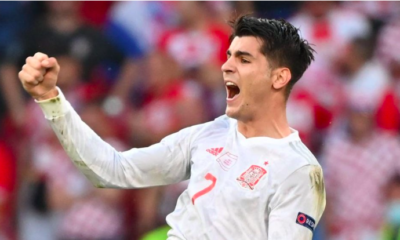
 Football6 months ago
Football6 months agoEuro 2024: Alvaro Morata Speaks Out About ‘No Respect’ in Spain
-
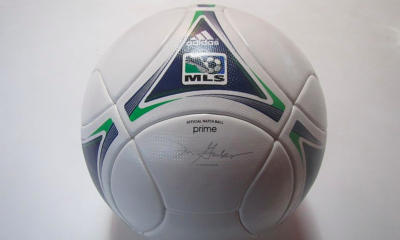
 Football7 months ago
Football7 months agoMeet the World Football Celebrities and Their Stories
-

 Game6 months ago
Game6 months agoThe Ultimate Guide to General Multi-Sport Events
-
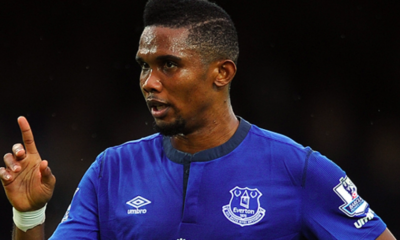
 Football7 months ago
Football7 months agoSamuel Eto’o: Legendary Cameroonian Soccer Star’s Career
-
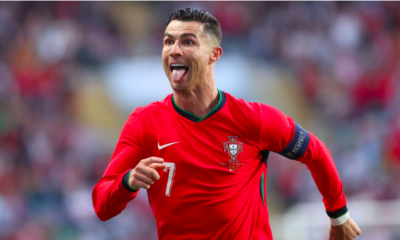
 Football6 months ago
Football6 months agoRonaldo’s Business Ventures and Investments (CR7 Brand)
-
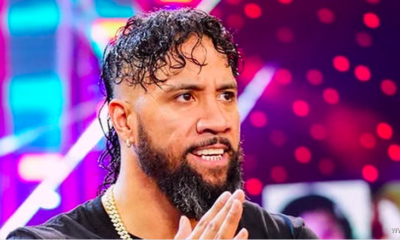
 Wrestling3 months ago
Wrestling3 months agoJey Uso Biography and Net Worth: The Rise of a WWE Superstar
-
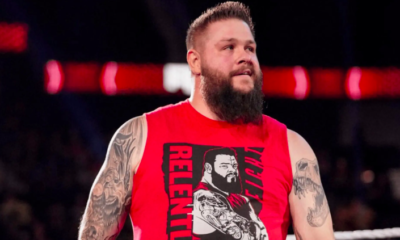
 Wrestling4 months ago
Wrestling4 months agoKevin Owens: The Prizefighter’s Rise to Fame and Fortune




